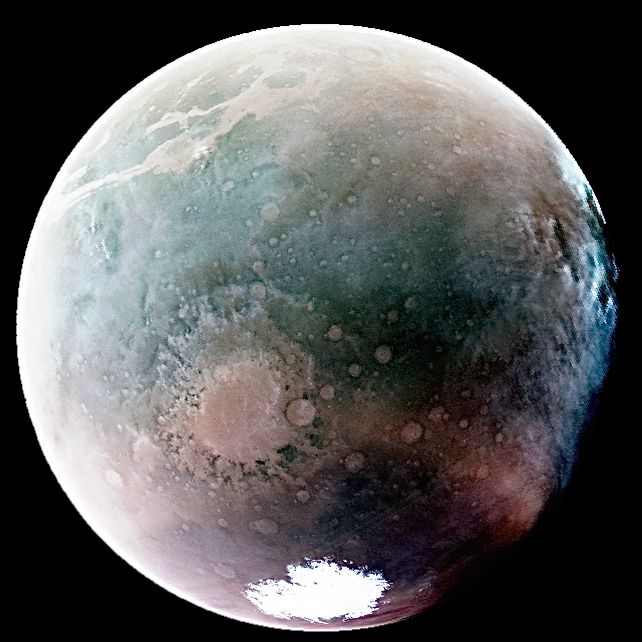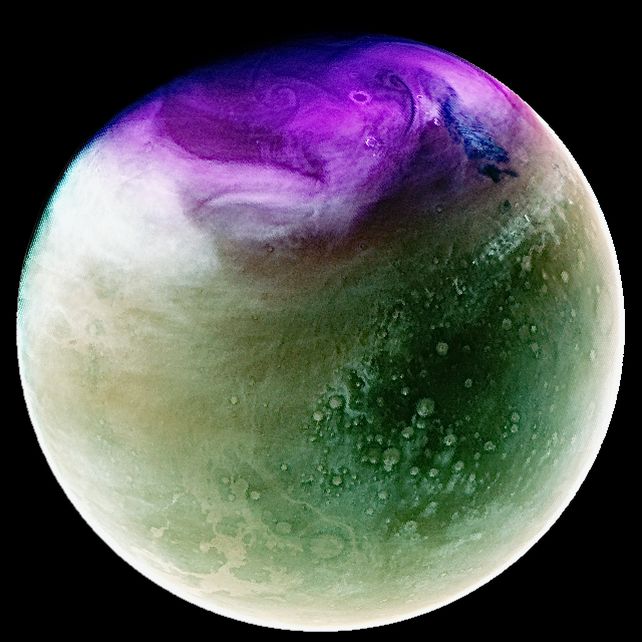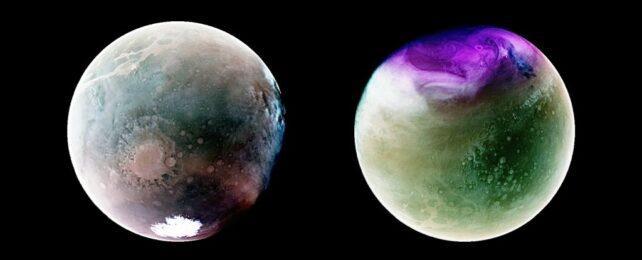You know what Mars looks like. It's all red and dusty, with its polar caps of white ice, shades of umber and iron rust, and impact scars.
But in a different light, our planetary next-door neighbor takes on a new hue. This is beautifully demonstrated in new images from NASA's Mars Atmosphere and Volatile EvolutioN (MAVEN) probe orbiting the red planet to provide insight into its atmospheric processes.
And now we have new images showing just how variable those processes can be.
MAVEN has a suite of instruments, including one that can peer into a wavelength invisible to human eyes: ultraviolet. In ultraviolet wavelength ranges, we can see different gasses and interactions occurring in the skies that wrap around Mars.
For example, MAVEN has revealed strange auroras dancing in ultraviolet light high above Mars and the invisible glow generated in the atmosphere at night (called nightglow) by atoms recombining after being split apart by sunlight.

Now, NASA has released new images showing three ultraviolet wavelengths, represented in red, green, and blue. The atmospheric hazes and clouds are colored white or blue, while the surface can appear tan or green. Ozone in the Martian atmosphere appears purple.
The two images were captured six months apart and showcase seasonal changes in the planet's atmosphere. The first, captured in July 2022, shows the southern hemisphere in summer, around the time of the summer solstice (and winter solstice for the northern hemisphere).
The atmosphere appears fairly clear, with clouds filling the canyons of the Valles Marineris at the top left. The extent of the southern polar ice cap, visible in stark white, is at a summer low. Water vapor can be detected at very high altitudes, driven by summer heat and dust storms.
The second image was taken six months later, in January 2023. Seasons on Mars are twice as long as seasons on Earth, so that means the image was taken a little after the spring equinox in the northern hemisphere.

Seasonal changes have produced many white clouds around the northern hemisphere, while a buildup of ozone shines purple. This gas accumulates in the atmosphere in the cold nights of winter, dissipating during the spring via interactions with water vapor as the polar ice sublimates in warming conditions.
MAVEN was initially planned for a 2-year mission duration, but it has been in Martian orbit since September 2014, and its mission has been extended indefinitely since it's still in great working order. The probe has accomplished marvelous things in its time in Mars orbit, and we hope it hangs around for a long time.
You can download the images in high resolution from NASA's MAVEN website.
